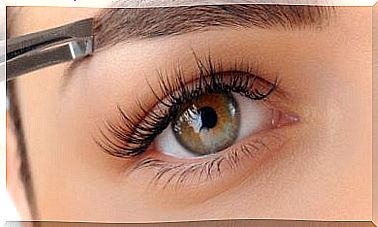A Compliment To Routine: Less Routinization And More Creativity

Routine is like an organizer and a computer of our lives. However, routinization, which is the abuse of habits and rituals, makes life very monotonous and colorless.
We need to stimulate creativity to achieve a balanced equation between routine and creation. This seems to be the formula for activating brain neuroplasticity and living a healthier life.
Let’s look at all of this in more detail.
What is routinization?
The Michaelis dictionary, in Portuguese, defines the word routine, derived from the French ( routine ), as ‘a path usually followed or trodden… habit of always doing things in the same way’.
Thus, the development of a certain routine causes an action or series of actions to be automatically systematized over time, which implies that they are carried out without mediating the reasoning or awareness of the action.

The life of all human beings is absolutely routine. In fact, programs to develop projects of any kind work as organizers of steps to be followed and, with that, certain routines are structured in order to achieve the desired goals.
This can be seen in diet programs to lose weight, systematic gym routines for weight training, training plans or therapeutic programs for drug addicts or alcoholics.
A structured program basically determines what can and cannot be done, in addition to having and indicating a series of limits: the actions we must follow, the sequence, the minimum goals, the final objectives, the context in which we will develop the actions, participants or time, among so many variables.
The systematic repetition of a program or exercise in a person’s life will be part of their daily routine, if it is to be applied every day.
work and routine
One of the areas where routine is seen most intensely is in the workplace. In certain mass production machines operated by men and women, the routine is made up of a series of automatic movements in which consciousness is lost.
However, these types of stereotyped actions have their risk, fundamentally in those machines that cut, rotate, tighten and, in case of distraction, can cause damage to the person executing the movement.
Routine automatisms lead to loss of attention and drowsiness. We must bear in mind that the brain does not accumulate glucose, but consumes it at a percentage of 25% of the body’s expenditure. It is possible that, after an hour and a half or two, this fuel is lost and symptoms of hypoglycemia occur, such as loss of control, attention, sleep, distractions, among other symptoms. And that’s where the risk increases!
On the other hand, everyday life is also made up of a chain of routines that organize us. Every day, millions of people get up at a certain time (taking into account that this time is adapted to the working day), take a shower, brush their teeth, choose their clothes, have breakfast (not always so healthy) , travel to work (on foot, train, bus, motorcycle, bicycle, car) and finally reach their destination.
In this “black and white” model of the routine, there are a series of rituals that give it a little color: I have another coffee that I buy at the bakery on the corner of work, I floss after eating cereal for breakfast, I use a certain perfume depending on the day, etc.
the routine ritual
Ritual is an important part of the routine. Rituals, like routine in general, are like computer software . Now, we are not talking about mandinga-like rituals or sympathies, based on magical thinking, of repeating some action so that the result is the desired one (wearing, for example, the same shirt when my favorite team plays, because “ he always wins when I do that “).
We’re also not talking about the pathological ritualism of obsessive-compulsive disorder, where you always walk across the same pottery on a sidewalk or wash your hands exactly 18 times. All these rituals are ruminant, exhausting, and have little to do with order and routine.
healthy rituals
There are healthy rituals that are part of a person’s general routine. For example, playing sports on several days at a certain time of the week, taking an afternoon off to break the week’s work, or going out on a Wednesday morning to read the news at your favorite bar.
Some of these healthy rituals are taught in psychotherapy as homework. It seeks to insert a habit in the person so that they can eliminate stress, connect them with health and with an activity that produces pleasure.
- If we can systematize this ritual as a habit, then there will be a small change in the person; change that will result in a domino effect, causing other changes or a major modification. Habits and rituals, then, are the soldiers that fit into the routine.
However, it must be said that the routine is not welcomed. It has been one of the most punished, criticized and disqualified states of man historically. It is usually associated with rigidity, apathy, boredom, structuring, boredom.
Routine is usually considered the opposite of creativity, which is why vacations are the time to put routine aside and get involved in activities that, due to work obligations or duties of any kind during the year, we cannot do.
Routine and routinization are not the same thing

Routine tells us that it is not necessary to invent anything new. If something works, and it works well with a routine, let’s not try to improve! Sometimes we try to improve or modify something that is going perfectly well. It is a mechanism that provides security, as it reduces surprises and unforeseen events.
However, it can lead to routinization, which is the abuse of routine. When a person falls into a routinization, he systematizes his life in a way that eliminates all creativity. Ritualization and systematization of habits to the extreme make existence tedious, monotonous and colorless.
Therefore, it is not the routine that should be criticized, but the “routine routine”. This is what we call routinization , an attitude that paralyzes creativity, spoils free time and can lead – as seen in the statistics of big cities – to depression, stress and suicide.
Routine can be a great ally
I suggest that we be aware of this line between good routine and abuse. Breaking certain habits can enhance originality; change certain steps, remove rigidity and create new programs, encourage deroutinization .
Routine abuse always perpetuates the same pathways as the neuroplastic network. Activating this network implies creating and having new ideas that constitute new alternative paths to these networks: when we break with the abuses of routine, we create new paths that favor creativity and, of course, the good life .









